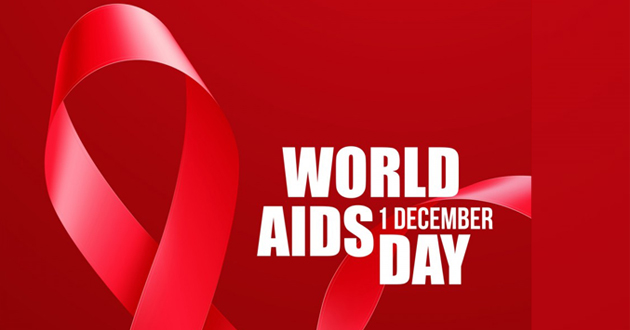 …written after the National AIDS Memorial Quilt display on the Washington Mall in the fall of 1996…
…written after the National AIDS Memorial Quilt display on the Washington Mall in the fall of 1996…
Dear Craig;
It was so great to see you. Life is moving too fast for us to let it take several more years before we do it, again.
I was far too cryptic in telling you of my Washington experience. I know you wanted to hear more. Perhaps, had we another dinner the next night, I would have slowed-down enough to truly articulate my experience. So, here, I give you more . . .
It was one of those days that distinguish Autumn from Fall . . . In the morning, it was cold enough for sweaters and overcoats. The sky was the clearest of blues without a cloud or any haze; crystal clear with the white granite and marble architectural outlines of Federal Buildings and monuments — and the Brick of the Smithsonian — providing it’s frame.
It was crisp and cold, and the wind was so gentle that it just breathed on one’s cheek, a caress of a loved spirit. . .
When we arrived at The Mall at 8:00am, the volunteers had just begun to gather in preparation for the 9:00 Opening Ceremony. Small groups of the white-clad army dotted the latticework of walkways that stretched from the edge of the capitol grounds to the Washington Monument. Everyone’s breath came out in streams of steam as they nursed cups of coffee and donuts (donated for the entire three days by Dunkin’ Donuts) and spoke in tones of hushed conviviality. Old friends welcoming old friends, hundreds of these people had volunteered at each of the Washington and other regional displays over the 12-year history of the quilt. Serving in this capacity is an honor.
From the Easternmost end of the display, one could look toward the Washington monument and see the 12′ wide pathways that criss-crossed the mall from end-to-end, creating 24′ x 48′ rectangles that rose — in-line, three-across — from there to the spire of the monument at the other end. Inside each of these rectangles were placed two bundles — the two 24′ x 24′ sections of the Quilt that were to be opened and displayed there within the hour.
It was serene and peaceful, and full of a calm anticipation.
By 9:00am, the perimeter of the display was 2-3 people deep with spectators. Some of these people had come to see the ceremony for the first time, some to see the Quilt for the first time; most of us were there awaiting the opportunity to visit loved ones’ panels. At about 9:05, the loudspeakers began to voice the litany of names of people on the quilt, and the teams of volunteers moved quietly, soberly onto the field and began to open the fabric.
There must have been two-hundred of these teams; one for each row of rectangles. While one team would be opening the first square on the North Side of the display, the team for the next row would be in position on the South side. It takes a full minute to open each square — first, it is unfolded like a lotus, then the team of eight lifts the fabric high into the air so the breeze can catch it as they rotate 1/4 turn to the right and set the monument down into it’s position. Then the team moves to the next position across the field as the alternating team replicates the rite.
All the while, all one hears is the litany of names in the morning sunshine.
It takes forever, and it takes twelve minutes to open The Quilt. In that brief eternity, poignant memories flow through the mind, one after the other, of lovers, friends, famous people you never knew, people you’ve read about, people who are in danger of losing the battle even now. . .
Then, it’s open. Where, moments before, there was a predominance of green throughout this mile of mall, it is now a million colors and textures. Flannel, satin, silk, plastic, leather, curtains, bed sheets . . . shiny, dull, warm, cool; every color and texture imaginable spreads out across the ground and welcomes the eyes and feet of the guest.
The litany is interrupted for the words, “The Quilt is now open.” Then, the names resume.
The crowd that had encircled the display moves silently onto the pathways, and in no time it is truly a sea of humanity. Thousands of people walking silently, reading panel after panel. Tears — some silent, some not — begin to fall and will continue. People stop and stare, some kneel beside the panel of a loved one or someone unknown, compelled by the story on the panel to stop and absorb it. Some remove their shoes and walk onto the quilt, feeling the fabric, feeling the love of the one who is represented there.
Some of the panels have photographs, some entire albums (Terry’s has a stack of pictures in a plastic case), some have favorite pairs of pants sewn-in, dresses, shoes, teddy bears, favorite shirts, sea shells, hats, icons of lives that some will never forget.
This scenario continues all day long, from 9:00am until 6:00pm. People silently wandering, politely passing one another, holding one another with love and support. Strangers will stop and comfort others who are suddenly overcome by the experience. This is unlike anything else you will ever experience. This brings the human toll of what is happening into starkest relief.
…….
At noon, on schedule, I was at the stage-side tent below the Capitol to prepare for my reading of names. As I signed-in, I was handed my sheet of names; 36 of them, representing a specific 24’x24′ display piece. As it happened, all of mine were first-names only. (Tragic evidence of the all-too-pervasive stigma and phobia associated with this pandemic and it’s victims. . .) I was seated on the rear of the stage, in a row of six or eight folding chairs, next to those who would read before me.
As each reader left the podium, we would each move one seat to the left — toward center stage. Some people went alone, some went with their friends or lovers or husbands or wives; their names being announced as they walked toward the microphone. When it was my turn to read, I stepped to the podium and began. . .
“Don R. . . . Tom . . . Sarah . . . Tim. . . .Steve . . . . Gene D. . . . .Javier . .. David. . . . . Alex . . .. Dominic . . . ” and, in my head, I wondered how old these people were, who they left behind, what had they left unfinished . . . .? As I read each name, I paused ever so briefly and looked at the Quilt and the sun shining on it and the faces of those standing before the stage who were listening. They were listening to me, and to the lives of the people I was sharing.
As I reached the end of my proscribed list, I added (as many, indeed most, do by tradition) a few close to me who had died since the last Washington Display. “Mark Bloomfield . . . ” I repeated the name of one of the funniest men I’ve known, who moved to San Francisco at about the same time I did and with whom I created some of my most idiotic memories; “John Witherow . .. .” one of the most handsome men to ever have walked this planet — with a laugh and a smile that could charm the hardest of hearts and a lack of guile matched only by the most innocent; “Tim Okey . . . ” truly one of the hardest party-ers I’ve ever had the privilege of witnessing, who could drink and drug ’til dawn, then successfully run one of the US’s largest swimming and athletic wear manufacturer’s Sales Departments; and, finally, “my lover, Terry McCormick, who died on this day, six years ago. . . ” a man who loved me with absolutely no conditions, who saw in me everything he wanted in another, and whom I continue to miss — profoundly and in the deepest core of my being.
I left the stage, tears in my eyes as they are now . . . down five steps to the arms of a volunteer. Two or three deep sobs into the shoulder of this anonymous soldier, a deep breath and across the tent into the sunshine . . . .
I miss him, so much. I miss them all. ..

The saddest time but so good to remember the joy of when they were here with us. Big hugs my faraway friend. xxx
I you, Jan…
Thank you for sharing these very touching memories…